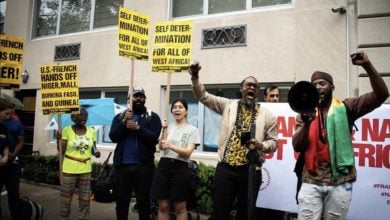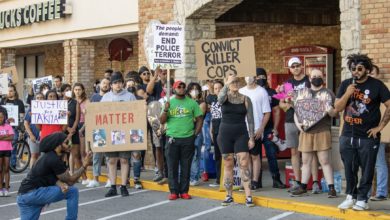
Originally published in Liberation Newspaper, July 2015
As thousands of people pour into the streets against racism, police brutality, poverty wages and other capitalist injustices, the question is often raised – is the system broken, or is it working exactly as it was intended?
There is clear evidence that the state machinery of the United States cannot be turned into a tool for liberation. Even a limited study of its historical development shows that it must be completely scrapped and replaced.
In the American Revolution, this country’s “Founding Fathers” and colonial ruling classes did not seek to overturn social and property relations. After all, they already held power. Rather, they constructed a state to entrench the existing social order and remove potential barriers to its expansion.
This meant two things at the time: “preparing the ground,” so to speak, by expelling and eroding the power of Native nations; and solidifying the rights in property of the leading classes, in particular the planters whose slaves powered the economy.
The popular vote was first only offered to those who owned property. Even as the property terms were gradually eliminated, Black people and women were totally excluded. Popular elections were only made available for the House of Representatives; U.S. senators were selected by the leading politicians of each state, while the president was selected by an elite Electoral College.
The First American Regiment, the first standing armed force of the U.S. government, was established to control the frontier. The larger and more significant Legion of the United States was formed after a crushing defeat of U.S. forces at the hands of the Western Confederacy of Native tribes in the Battle of Wabash. A series of “Militia Acts” followed, which established the ability of the president to call out state militias to coordinate actions against Native nations, and ostensibly “foreign invasion.”
Slavery and ‘democracy’
The subordination of Black people as a people—or if you prefer a “race”—coincided with the rise of plantation slavery. An elaborate legal and political system, in tandem with new social codes of conduct, “normalized” racial oppression in all aspects of society. This system, protected by state and extra-state violence provided stability to a system that at its bottom was powered by the labor of several million enslaved people.
The enslavement of and denial of rights for Black people was not merely an expression of hypocrisy. Rather, white supremacy provided the foundation for the “democratic republic.”
In the North, the rich called for centrally organized police forces to pacify demonstrations and labor strikes, and contain the multitudes of poor and working people. In the South, police forces emerged largely out of the slave patrols that traveled the countryside to intimidate and brutalize slaves who threatened to challenge the existing order or run away.
The Constitution is held up as a semi-sacred document in U.S. schoolrooms as the world’s “longest surviving constitution.” But the Constitution’s long survival actually proves that the current state institutions, forms of government and social rights of the country descend, without fundamental alteration, from 100 bourgeois and slave-owning white men over two centuries ago.
For all the reforms that the system has offered, the basic state institutions and structures defending private property have remained and grown stronger. For the ruling class, every concession to the people’s movements has been an effort to relegitimize its own rule.
The only way to remake society is to uproot the institutions of elite power and replace them with institutions of popular and working-class power.
That means a new Constitution and new laws; new forms of decision-making in all aspects of society; new forces of public safety and community security; a new approach to law and order; and new armed forces to interact with the world’s people on a completely different basis. None of that is possible without a new power—a revolution.
Read the full version of this article in Revolution Manifesto.






